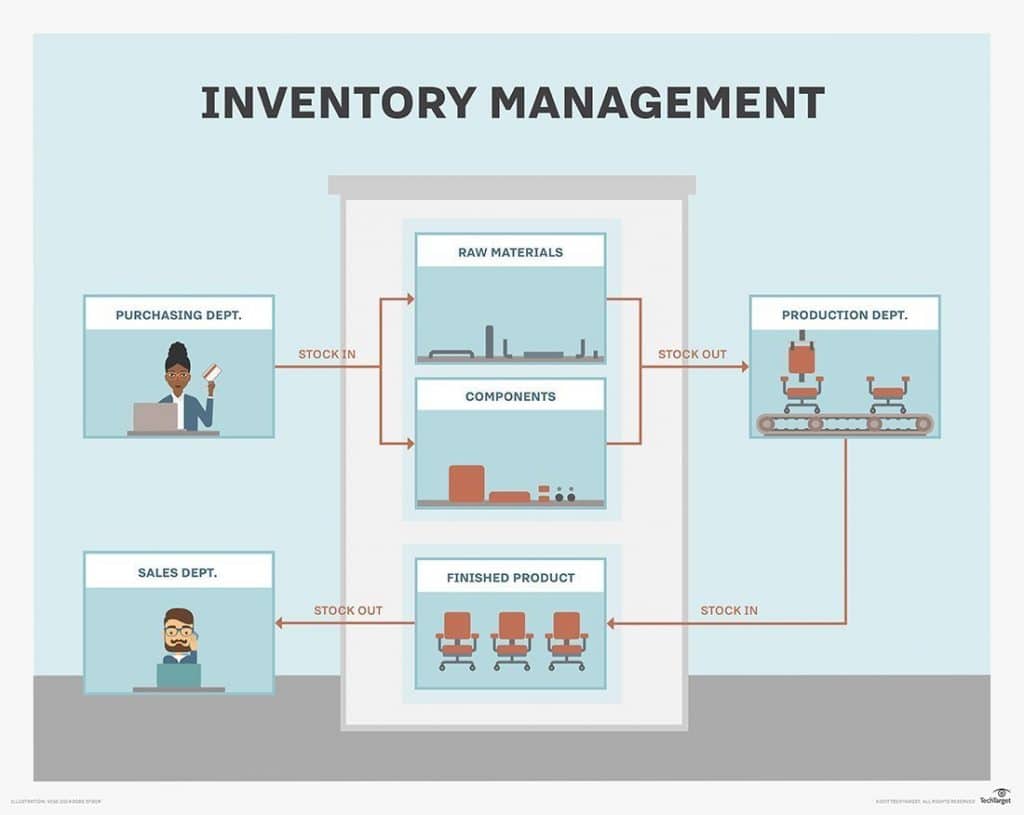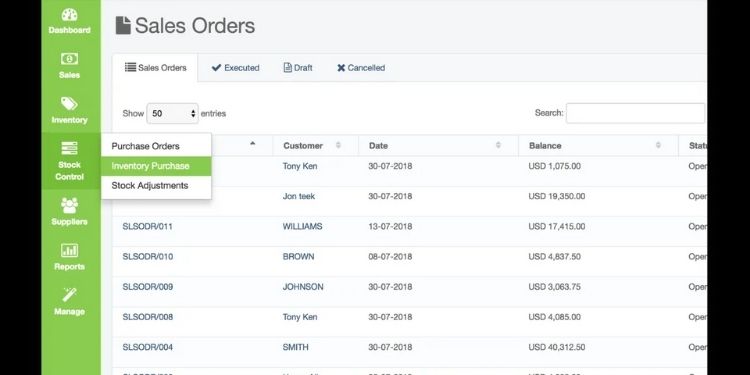Inventory software business is a rapidly growing industry that is helping businesses of all sizes to improve their inventory management practices. This software can help businesses track their inventory levels, manage orders, and fulfill orders more efficiently. In this article, we will discuss the benefits of using inventory software, how to choose the right software for your business, and how to implement and integrate inventory software with your existing business systems.
Inventory software can help businesses save time and money by automating many of the tasks associated with inventory management. This software can help businesses track their inventory levels in real time, so they can always know what they have in stock. This can help businesses avoid overstocking or understocking, which can both lead to lost profits. Inventory software can also help businesses manage orders more efficiently. This software can help businesses track the status of orders, so they can always know when orders are placed, when they are shipped, and when they are delivered. This can help businesses improve customer satisfaction and reduce the number of order errors.
Inventory Management Capabilities

Inventory management software is a powerful tool that can help businesses optimize their inventory levels and improve efficiency. It provides a centralized platform for tracking stock, fulfilling orders, and managing warehouses.
With inventory software, businesses can:
- Track stock levels in real-time
- Automate order fulfillment
- Manage multiple warehouses
- Generate reports on inventory performance
Stock Tracking
Inventory software allows businesses to track stock levels in real-time. This information can be used to identify slow-moving items, prevent overstocking, and ensure that there is always enough stock on hand to meet demand.
Order Fulfillment
Inventory software can automate order fulfillment. This can save businesses time and money, and it can also help to improve customer satisfaction.
Warehouse Management
Inventory software can help businesses manage multiple warehouses. This can be a complex task, but inventory software can make it easier by providing a centralized platform for tracking stock levels, managing orders, and generating reports.
Reporting
Inventory software can generate reports on inventory performance. This information can be used to identify trends, make better decisions, and improve profitability.
Benefits of Using Inventory Software
Inventory software offers a myriad of advantages for businesses of all sizes, streamlining operations and boosting profitability. By leveraging advanced technology, businesses can achieve unprecedented levels of inventory management, leading to significant improvements in accuracy, cost reductions, and enhanced customer satisfaction.
Improved Accuracy
Inventory software eliminates the errors and inconsistencies that often plague manual inventory tracking. Automated systems ensure real-time updates, eliminating the risk of human error. This enhanced accuracy allows businesses to make informed decisions based on accurate data, reducing the likelihood of stockouts or overstocking.
Reduced Costs
Inventory software significantly reduces operational costs by optimizing inventory levels. Businesses can avoid the financial burden of holding excess inventory, freeing up capital for other investments. Additionally, automated processes reduce the need for manual labor, further reducing labor costs.
Enhanced Customer Satisfaction
Accurate inventory management is crucial for fulfilling customer orders efficiently. Inventory software enables businesses to track stock levels in real-time, ensuring that customers receive their orders on time and in full. This proactive approach enhances customer satisfaction, leading to increased loyalty and repeat business.
Case Studies
- Company A: Implemented inventory software and reduced stockouts by 50%, resulting in a significant increase in customer satisfaction.
- Company B: Automated inventory processes, reducing labor costs by 30% and freeing up resources for other strategic initiatives.
Choosing the Right Inventory Software
Selecting the optimal inventory software for your business necessitates careful evaluation and consideration. Begin by defining your specific requirements, including the size and complexity of your inventory, the need for tracking multiple locations or warehouses, and the level of integration with other business systems.
Conduct thorough research to identify software solutions that align with your needs. Explore online reviews, consult with industry experts, and request demos from potential vendors.
Comparison Table of Inventory Software Solutions
The following table provides a comparison of key features and pricing for popular inventory software solutions:
| Feature | Solution A | Solution B | Solution C |
|---|---|---|---|
| Multi-location Tracking | Yes | Yes | No |
| Warehouse Management | Yes | No | Yes |
| Integration with ERP Systems | Yes | Yes | No |
| Pricing (per month) | $100 | $150 | $200 |
Implementation and Integration

Implementing and integrating inventory software with existing business systems is a crucial step in ensuring its successful adoption and utilization. A well-planned and executed implementation process can minimize disruptions and maximize the benefits of the software.
To ensure a smooth and successful implementation, consider the following best practices:
Data Migration
- Plan for seamless data migration from existing systems to the new inventory software.
- Ensure data accuracy and completeness before migration to avoid errors and inconsistencies.
Integration with Existing Systems
- Identify and integrate with key business systems, such as ERP, CRM, and accounting software.
- Establish clear communication channels between the software vendor and your IT team to ensure smooth integration.
Training and Adoption, Inventory software business
- Provide comprehensive training to users on the new inventory software’s functionality and best practices.
- Encourage user feedback and involvement to ensure the software meets their needs and expectations.
Monitoring and Maintenance
- Establish regular monitoring processes to track inventory levels, identify discrepancies, and ensure data accuracy.
- Perform regular software updates and maintenance to keep the system running smoothly and securely.
Trends and Future of Inventory Software: Inventory Software Business
The inventory software landscape is constantly evolving, driven by advancements in technology and changing business needs. Emerging trends include the adoption of artificial intelligence (AI) and machine learning (ML) to automate and optimize inventory management processes.
AI and ML algorithms can analyze vast amounts of data to identify patterns, predict demand, and make recommendations for inventory optimization. This can lead to improved inventory accuracy, reduced stockouts, and increased efficiency.
Cloud-Based Inventory Management
- Cloud-based inventory management systems offer scalability, accessibility, and cost-effectiveness.
- They enable real-time inventory visibility across multiple locations and devices, facilitating better collaboration and decision-making.
Integration with Other Business Systems
- Inventory software is increasingly being integrated with other business systems, such as ERP, CRM, and accounting software.
- This integration streamlines data sharing and eliminates manual processes, improving efficiency and reducing errors.
Mobile Inventory Management
- Mobile inventory management apps allow users to access inventory data and perform tasks on the go.
- This enables real-time inventory tracking, order processing, and cycle counting, enhancing productivity and flexibility.
RFID and IoT Integration
- Radio frequency identification (RFID) and Internet of Things (IoT) technologies are being integrated with inventory software to automate inventory tracking and improve accuracy.
- RFID tags can be attached to items, enabling real-time tracking throughout the supply chain.
Summary

Inventory software is a valuable tool that can help businesses of all sizes to improve their inventory management practices. This software can help businesses save time and money, improve customer satisfaction, and reduce the number of order errors. If you are looking for a way to improve your inventory management, then you should consider investing in inventory software.
Quick FAQs
What are the benefits of using inventory software?
Inventory software can help businesses save time and money by automating many of the tasks associated with inventory management. This software can help businesses track their inventory levels in real time, so they can always know what they have in stock. This can help businesses avoid overstocking or understocking, which can both lead to lost profits. Inventory software can also help businesses manage orders more efficiently. This software can help businesses track the status of orders, so they can always know when orders are placed, when they are shipped, and when they are delivered. This can help businesses improve customer satisfaction and reduce the number of order errors.
How do I choose the right inventory software for my business?
There are many different inventory software solutions available, so it is important to choose the one that is right for your business. When choosing inventory software, you should consider the following factors: the size of your business, the type of inventory you manage, and your budget. You should also consider the features that are important to you, such as real-time inventory tracking, order management, and reporting.
How do I implement and integrate inventory software with my existing business systems?
Implementing and integrating inventory software with your existing business systems can be a complex process. It is important to carefully plan and execute this process to avoid disruptions to your business. You should work with a qualified IT professional to help you with this process.